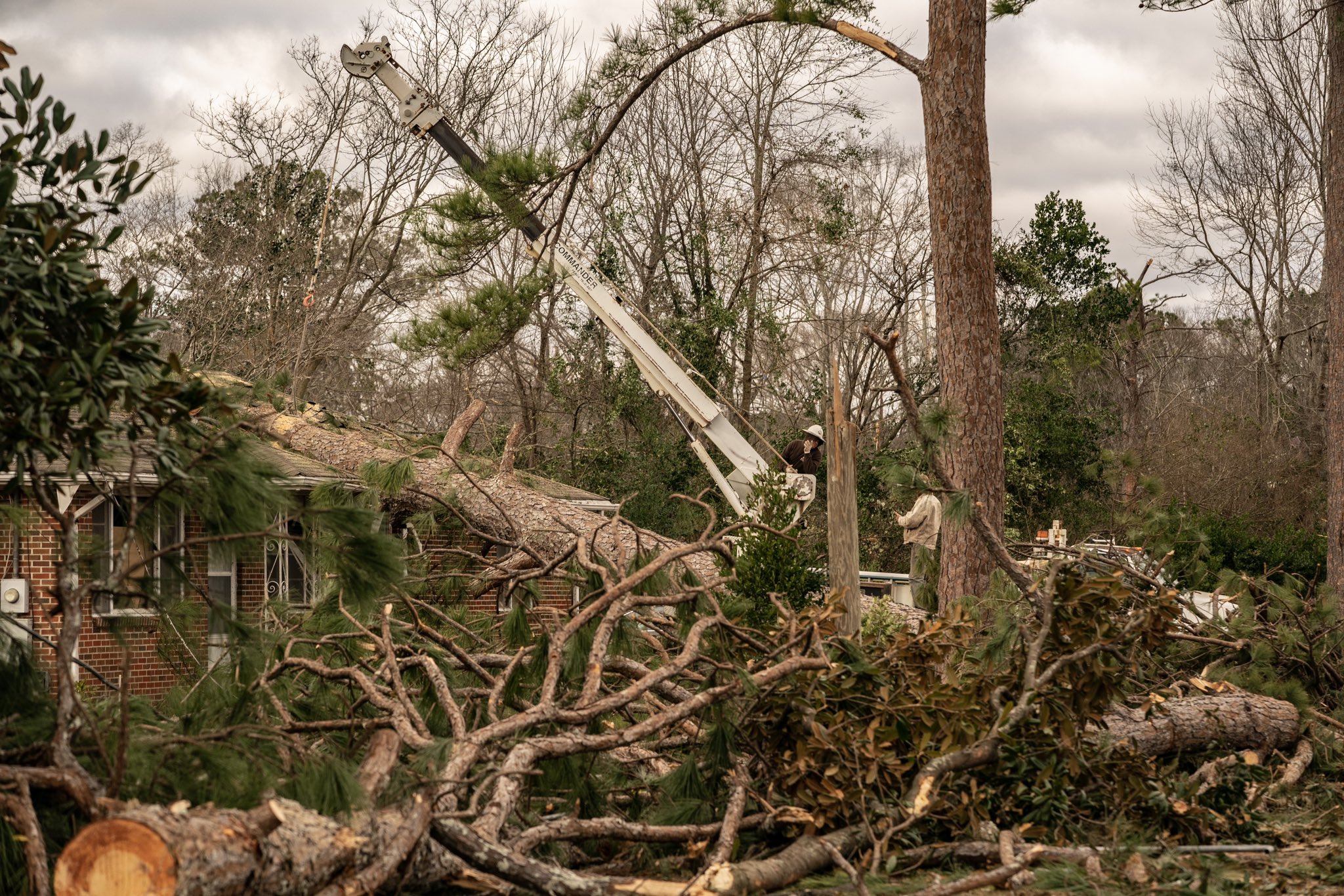

The 2023 tornado season was above average for number of twisters and fatalities. The National Oceanic and Atmospheric Administration’s (NOAA) Storm Prediction Center’s year-end report counted 1,197 confirmed tornado reports, with almost 100 preliminary twisters from the October 1-December 31 period not yet finalized. This exceeds the 1991-2010 average of 1,251 tornadoes.
The NCEI broke the months down as follows: 128 confirmed tornadoes in January, 54 in February, 206 in March, 147 in April, 169 in May, 234 in June, 111 in July, 1 in August, 25 in September, 31 (preliminary) in October, 31 (preliminary) in November and 46 (preliminary) in December.
This profile focused on the most impactful tornadoes for marginalized and at-risk populations. Tornadoes are listed in the Impact section in reverse date, chronological order.
(Photo: Tornado damage in Alabama, Jan. 13. 2023. (Source: Alabama Governor Kay Ivey via Twitter)
The NWS defines tornadoes as “a violently rotating column of air touching the ground, usually attached to the base of a thunderstorm.” Any thunderstorm can develop a tornado, but the most severe twisters are created inside supercell thunderstorms, defined by a rotating updraft.
Tornadoes are measured using the Enhanced Fujita Scale, which assigns ratings from EF-0 to EF-5. Scales are determined by the NWS after a tornado based on the amount of damage viewed on the ground. This helps investigators estimate the highest approximate wind speed that was sustained for at least a three-second gust.
Latest Updates
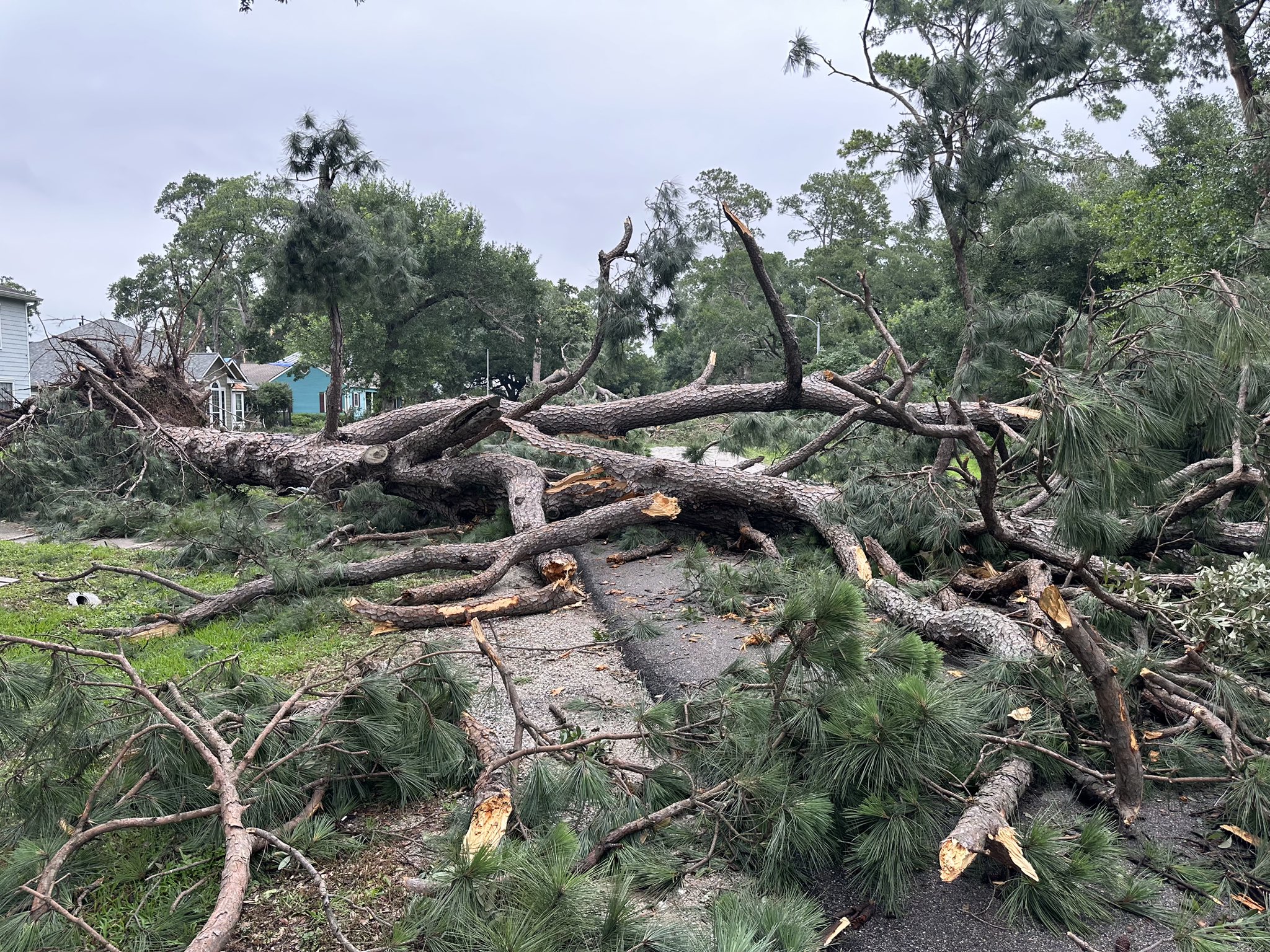
What we’re watching: Weekly disaster update, May 20
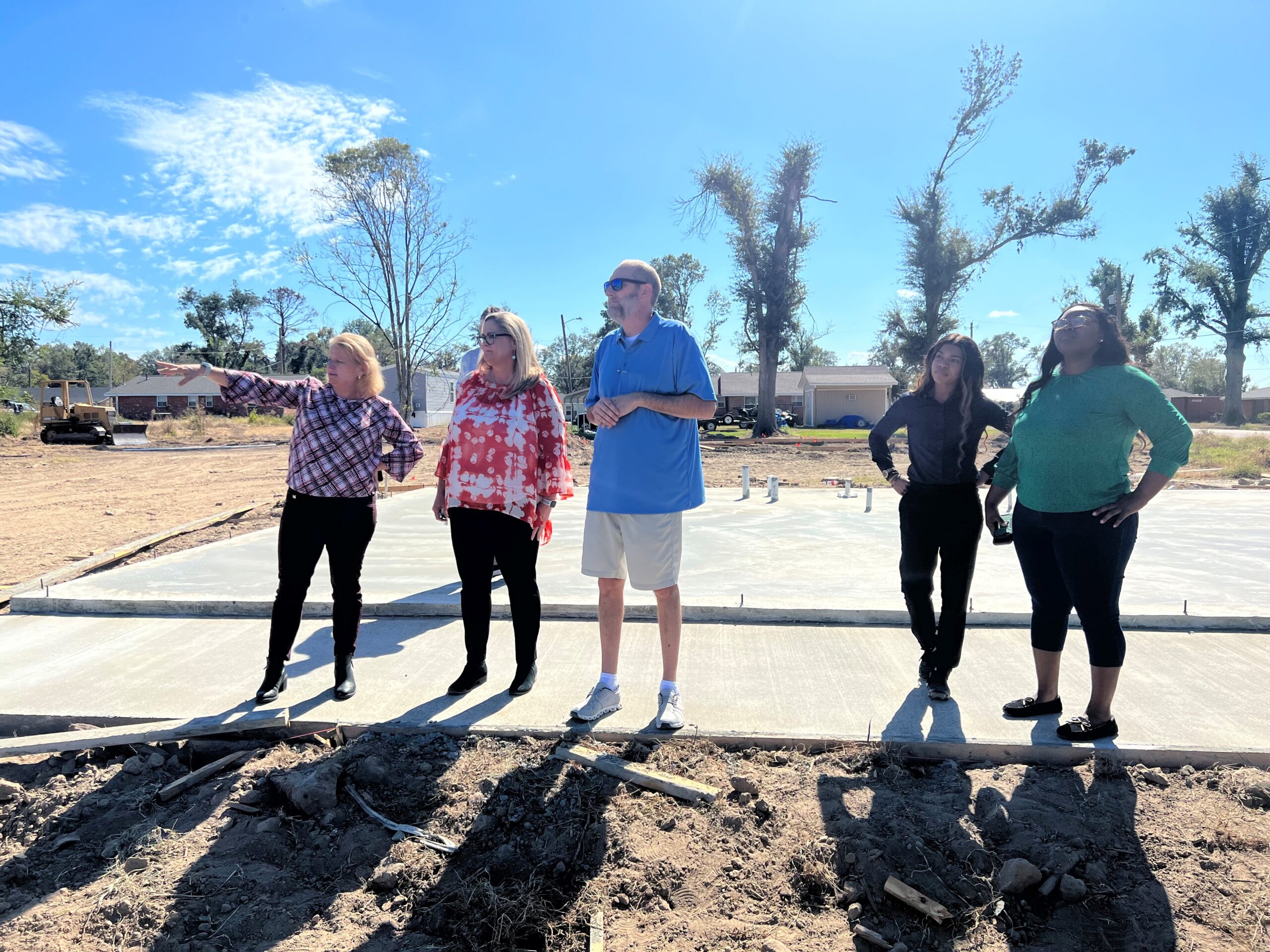
Announcing more than $784,000 in CDP Tornado Recovery Fund grants for community recovery from 2023 storms
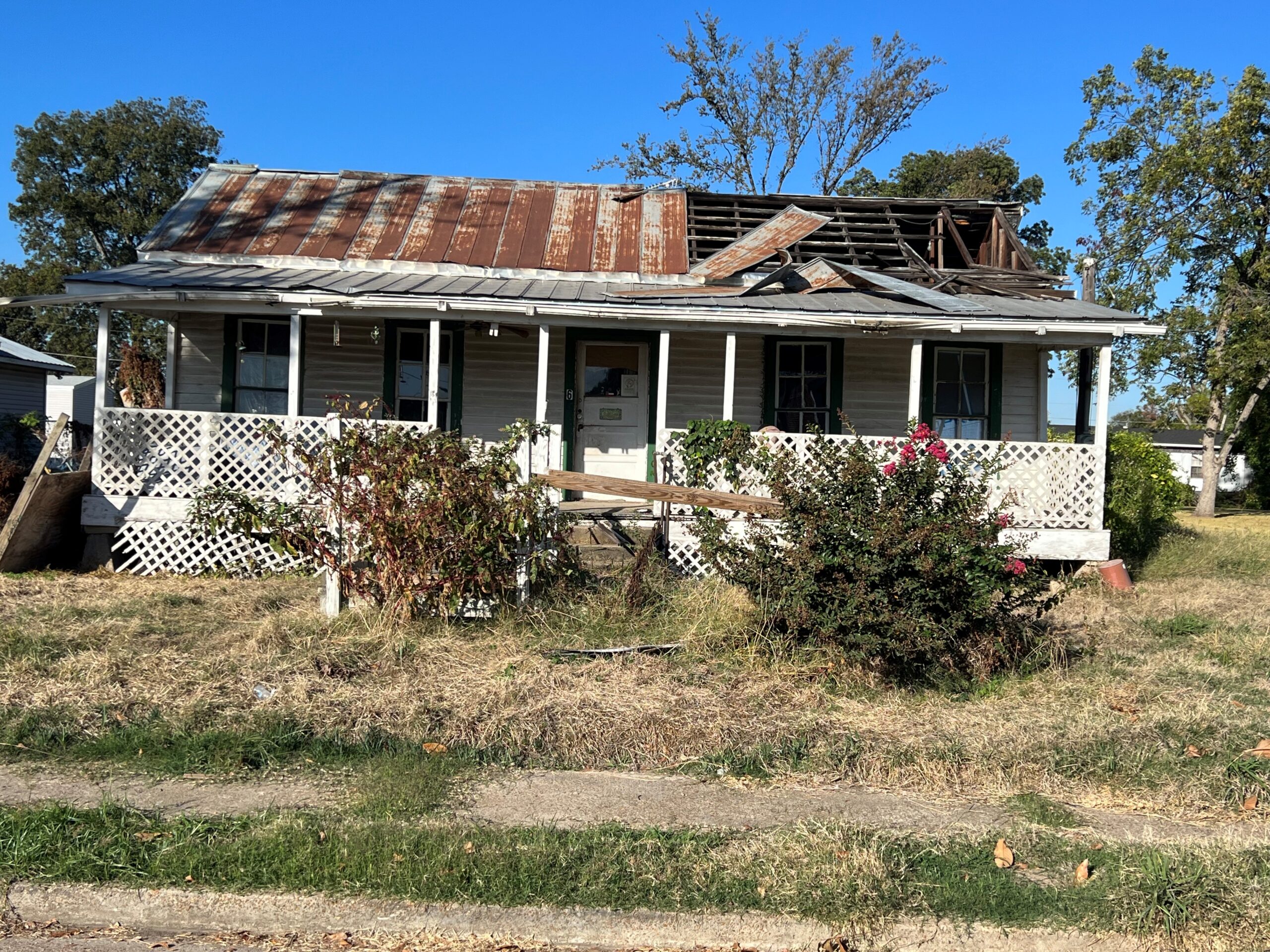
Building Black resilience after disasters: Insights from our trip to Mississippi

Announcing $2.12 million to support recovery from hurricanes, wildfires, tornadoes and more

What we’re watching: Weekly disaster update, October 16
Key facts
- According to National Centers for Environmental Information (NCEI) there were 83 fatalities across 12 states in 2023. Of these deaths, 49 occurred in manufactured homes, 16 in a home, seven in another kind of building or in a vehicle, and two outside or unknown. Manufactured homes are highly at risk for tornado damage and fatalities. There were seven months with 100 or more tornadoes. March saw 244 separate twisters, the highest for the year.
- There were many months with significant numbers of tornadoes with January and February tied for the fourth-most active months on record. June exceeded the average of deaths for the month after the storms on June 15. The biggest twisters were two EF-4 tornadoes.
- More than half of the mainland states experienced tornadoes, from California to Delaware and from Wisconsin to Texas.
- There were 11-billion-dollar disasters in 2023 that included tornadoes. The estimated cost of tornado-caused property damage as part of these systems exceeded $50 million.
- During a typical El Niño season (which 2023 was) the risk to the traditional tornado alley – through the central Plains and lower Midwestern states – switches to Florida, Texas and the West Coast.
Dec. 9: Middle Tennessee
On Dec. 9, 2023, a large storm system moved into Middle Tennessee, spawning a major tornado outbreak that killed at least six people and injured more than 80.. The National Weather Service confirmed two tornadoes – the Clarksville tornado as an EF-3, with winds of 150 mph and the Madison/Hendersonville/Gallatin tornado as an EF-2, with winds of 125 mph – and is investigating other reports.
From preliminary damage assessment, the Montgomery County Emergency Management Agency found that Clarksville – the county seat and a city of 170,000 people approximately 45 miles northwest of Nashville – had 65 structures with minor damage, 339 with moderate damage and 271 with major damage, making them uninhabitable. Additionally, 91 structures were totally destroyed.
Aug. 4-8: Multiple states
Baring, Missouri, a town of 124 people, was hit by an EF-2 tornado on Aug. 4, 2023, the first of several days of storm systems that hit multiple states. Two people were injured and there was extensive damage to homes.
In an email communication, Missouri VOAD reported, “The community of 125 has between 30-40 destroyed residences, another 10 with significant damage, and more than 30 with minor impacts.
July 29: Nebraska
An EF-1 tornado ripped through Sutton, Nebraska, 70 miles southwest of Lincoln, on July 29, 2023. There were no injuries, but the town was severely damaged by the storm. There was also some damage to homes in Sutton. Gage County and the city of Crete also suffered damage from the storm.
June 21-26: Great Plains, Mississippi Valley and Southeastern United States
After a brief break from the previous round of severe storm systems, many of the same regions were hit again. Nearly 70 tornadoes occurred, and were exacerbated by the extreme heat, which also caused recovery issues as power was knocked out across the region.
One of the biggest tornadoes was a high-end EF-3 twister that hit western Matador, Texas on June 21, 2023. It led to four deaths, 15 injuries and the destruction of numerous homes and businesses.
Other tornadoes were reported in Colorado and North Carolina (June 22); Wyoming, Oklahoma, Nebraska and Colorado (June 23); Minnesota and Iowa (June 24); and Indiana and Kentucky (June 25).
On Nov. 14, 2023, President Biden approved a major disaster declaration for Public Assistance in four Arkansas counties in response to the severe storms, straight-line winds and tornadoes from June 25-26. Unfortunately, this declaration provides assistance only to qualifying governmental and nonprofit organizations and does not provide any governmental monetary assistance for individuals and households.
June 14-19: Southern U.S., Midwest and Great Plains
Numerous tornadoes struck across several states, from Texas to Ohio. in the middle of June, covering a period of several days. In addition to 56 verified tornadoes, strong winds and large hail were also reported.
Five people were killed – one each in Florida and Mississippi and three in Perryton, Texas, including an 11-year-old boy. More than 100 people in Perryton were injured as well. The town of 8,000 is located on the Texas-Oklahoma border.
On June 18, 2023, an EF-3 tornado hit Mississippi, near Louin, about 55 miles southeast of Jackson. One person was killed and 25 injured. It was one of 11 tornadoes to hit Mississippi that evening.
May 10–13: Great Plains
With more than 78 tornadoes confirmed, this outbreak saw five EF-2 twisters touchdown, and the death of one person.
The Laguna Heights twister is a good example of how damaging a storm can be when it hits manufactured housing or low-income communities. There were at least 21 homes destroyed and an additional 31 homes with major damage. Laguna Hills is an unincorporated community comprised of hotel and restaurant workers and older adults who have lived there for most of their lives. Almost half the residents are renters and now face a rental housing shortage.
Nebraska saw 25 tornadoes across the state on May 12, 2023, including 18 tornadoes in Eastern Nebraska, of which three were EF-2.
April 19: Iowa, Kansas and Oklahoma
At least 29 tornadoes touched across Iowa, Kansas and Oklahoma on April 19, 2023. These included two EF-3 twisters and six EF-2s.
Three people were killed in or near the town of Cole in McClain County, Oklahoma, a town of just over 600 people, during an EF-3 tornado that was on the ground for 35 minutes, traveling 11 miles at a width of two-thirds of a mile.
April 4-5: Illinois, Iowa and Missouri
A tornado in Bollinger County – across the Mississippi River from Illinois – killed five people when it touched down at 3:30 a.m on April 5, 2023. The twister was on the ground for 15 minutes and traveled 15-20 miles. An EF-2 storm, it was one of nearly a dozen to hit the multi-state area.
Two tornadoes hit Fulton County, Illinois. One, an EF-1, caused minor damage, but an EF-3 was on the ground for 24 minutes and traveled 18.7 miles near Canton. Four people were injured.
March 31-April 1: Multiple states
More than 145 tornadoes across at least 15 states received preliminary ratings between March 31 and April 1, 2023, including one EF-4, 11 EF-3s, 32 EF-2s, 47 EF-1s, 45 EF-0s and nine EFUs.
There have been 33 deaths to date, with dozens of people critically injured. In Tennessee, 15 people were killed, including nine people in McNairy County and three in Shelby County. Four people died in Wynne, Arkansas and one in North Little Rock.
The impact of these tornado outbreaks was significant, as evidenced by media reports and videos from the ground.
In Iowa, an EF-4 tornado (only the second this year) was on the ground for nearly an hour. It was the strongest tornado in the state since 2008. It began in southern Keokuk County and ended far into southwest Johnson County, destroying many homes and trees along the way. It was one of at least 23 tornadoes that hit the state on Friday, March 31.
In Arkansas, an EF-3 hit the Little Rock Metro area (including Little Rock and North Little Rock) in Arkansas, killing one person, injuring dozens (some critically) and damaging over 2,100 homes (and 2,600 structures). In Wynne, Arkansas, four people died in another EF-3 tornado and the police chief reported that the town had experienced “total destruction.” Governor Sarah Huckabee Sanders declared a state of emergency and activated the National Guard.
Indiana saw more than 23 tornadoes on March 31, making it the fifth-largest outbreak in Indiana’s history and the biggest outbreak in Central Indiana in 10 years.
The tornadoes in Indiana included at least six EF-2 and four EF-3s. The Gas City EF-3 tornado was on the ground for only five minutes but traveled 3.4 miles, causing significant damage. An EF-3 tornado traveled from Ste. Marie in Jasper County, Illinois and ended in Sullivan County, Indiana. Dozens of homes were damaged.
Just after 3 a.m. CT, on April 1, an EF-3 tornado, hit northern Madison County, Alabama and southeastern Lincoln County, Tennessee. The peak winds are estimated at 160 mph, and the twister was on the ground and traveled 12.1 miles in 16 minutes. Uprooted trees fell on homes, destroyed farm buildings, damaged multiple stores and numerous homes received heavy damage along the Tennessee-Alabama border.
An EF-3 tornado in Delaware led to the death of one person on April 1, the second day of storms. Several homes were damaged or destroyed in the Greenwood area. It was the widest tornado ever for the state, and one of the two strongest; the other occurred in 1961. The tornado was on the ground for 14 miles, with winds of 140 mph.
Related reading
March 24-27: Alabama, Georgia, Mississippi, Missouri, Tennessee and Texas
At least 25 million people across the U.S. Deep South faced threats of severe storms March 24-27. At least 30 tornadoes have been confirmed, including four EF-0 tornadoes, 18 EF-1s, five EF-2s, three EF-3s and a massive EF-4, an extremely strong tornado.
The storm systems killed at least 24 people – two in Missouri, 21 in Mississippi (a decrease from initial reports) and one in Alabama. In Mississippi, “the total fatality number has been revised to 21 storm-related fatalities.
The second-deadliest tornado outbreak so far in 2023 occurred late in the evening on March 24 in Mississippi. NWS gave one of the tornadoes a rating of an EF-4, with several videos and photos confirming the extent of the damage.
The towns of Rolling Fork in Sharkey County and Silver City in Humphreys County, Mississippi, were decimated. All the businesses on Highway 61 – the main business district in Rolling Fork – were destroyed, trapping several people inside. Both towns are quite small – roughly 1,800 and 200 people, respectively – so there will be a significant lack of resources available locally for assistance. They are majority Black communities with high levels of pre-existing poverty. The housing stock had a large amount of tenant housing, RVs, mobile and manufactured homes.
Rolling Fork, the county seat of Sharkey County, is a good example of how a tornado in a small community can have an outsized impact. The county has a geographic footprint of 4352 miles. The tornado damaged or destroyed the following structures: Sharkey Issaquena Hospital, a fire station, Rolling Fork Elementary School, South Delta High School, a church, a library, the Rolling Fork U.S. Post Office, the Rolling Fork City Hall, the Rolling Fork Police Department, Sharkey County Courthouse, a water tower, several business including an agricultural business, Ace Hardware store, a Family Dollar and 30 mobile homes at the Chuck’s Dairy Bar property.
Eldridge Walker, Mayor of Rolling Fork (and the local funeral director), told CNN, “My city…my city is gone. But we’re resilient, and we’re going to come back. We’re going to come back strong.”
The Egypt–New Wren–Amory–Smithville tornado was an EF-3 tornado that lasted 31 minutes (from 10:38 p.m. to 11:09 p.m. CT), with winds as high as 155 miles. This was an extremely fast twister that stemmed from the same storm that led to the Rolling Fork and Black Hawk/Winona tornadoes. The tornado touched down southwest of Egypt in Chickasaw County gaining strength and damaging homes in its path, many of them manufactured homes, as well as the local high school. A town of 6,000 people, Amory was under a boil water advisory for several days after the tornado, due to damage to the city’s water department which took a direct hit from the twister.
Over the four days, there were 13 tornadoes that hit Alabama. An EF-2 tornado in Morgan and Lawrence counties was on the ground for 13.5 miles, damaged several homes and killed a man after he was trapped under his trailer. The Huntsville Hospital also experienced damage.
Early in the morning on March 24, severe thunderstorms led to two tornadoes in Parker County, Texas. NWS assessed both as EF-1 twisters with winds up to 100 mph.
Georgia had five tornadoes as part of this outbreak, including an EF-0 in Laurens County on March 25, an EF-3 in Troup and Meriweather counties on March 26.
“According to Troup County EMA, 146 total homes were affected, 23 were destroyed, 26 sustained major damage and 41 sustained minor damage. Additionally, several businesses were affected.”
Related reading
March 22: California
A rare tornado hit California on March 22, in the Montebello suburb of Los Angeles. Rated a high EF-1, this was the strongest tornado to hit the LA metro since 1983. Most of the damage was confined to an industrial area. There was also an EF-0 tornado the same day in Carpinteria.
March 2: Arkansas, Louisiana, Oklahoma, Tennessee and Texas
Severe weather traveled across several states in the south producing two EF-0, seven EF-1 and one EF-2 tornado.
The EF-2 twister in Pike, Arkansas, threw a mobile home 100 meters, despite it being tied down. At least 20-30 other homes were damaged or destroyed, along with commercial chicken operations. In Caddo Parish, Louisiana, an EF-1 tornado damaged almost 100 homes, four businesses and an apartment building in Shreveport.
Feb. 26-27: Illinois, Kansas, Oklahoma and Texas
An extensive storm complex covered several states on Feb. 26 and Feb. 27, 2023.
The hardest-hit area was Oklahoma, which saw its record of six tornadoes in February shattered on Feb. 26, with 11 twisters. One person was killed, and several dozen were injured across the state. Norman, Oklahoma, home to the National Weather Service’s Storm Prediction Center, saw significant damage.
At least three of the tornadoes were confirmed as EF-2s, including one with a 27-mile path in Goldsby-Norman and one in Ayedelott.
Feb. 8: Louisiana and Mississippi
At least one tornado touched down in Louisiana and one in Mississippi on the evening of Feb. 8, 2023, as part of a wide storm system. The National Weather Service (NWS) gave the Louisiana twister a rating of EF-2 and the Mississippi tornado a EF-0 rating.
At least three people were injured, and over 25 homes were affected, including mobile homes that were destroyed.
Jan. 12: Alabama and Georgia
On Jan. 12, 2023, extreme weather and tornadoes left behind a path of destruction in Alabama and Georgia, with minor impacts in several other states. At least 38 tornadoes have been confirmed, including seven EF-0s, 19 EF-1s, 10 EF-2s and 2 EF-3 twisters. Fourteen tornadoes touched down in Alabama including an EF-3 named the Old Kingston-Lake Martin Tornado that affected multiple counties and killed seven people in Autauga County. The tornado brought estimated peak winds of 150 miles per hour, and its path length was 76 miles, making it Alabama’s ninth-longest tornado track on record.
Tornadoes and straight-line winds caused damage and power outages across north Georgia and metro Atlanta. On Jan. 16, the NWS confirmed eight tornadoes in Georgia, including an EF-3 that traveled across Pike, Spalding and Henry counties. Manufactured homes were damaged in Henry County, Georgia, and the community was helping one other with the cleanup.
The American Red Cross reported that nearly 1,000 homes received major damage or were destroyed across Alabama and Georgia.
In Alabama, the tornadoes resulted in the deaths of at least nine people, with two others killed in Georgia. President Biden has approved disaster declarations for affected counties in Alabama and Georgia.
Related reading
While there are many immediate needs in the wake of the tornadoes, such as temporary housing, childcare, automobile replacement, etc., funders must also consider holding back funds in anticipation of the intermediate and long-term needs of the affected communities.
Long-term repair and rebuilding of housing and businesses requires additional funding beyond the initial infusion of funds assigned to address life safety issues. Community members who have the resources to recover on their own will do so, while, without an additional infusion of assistance, at-risk community members would not be able to recover.
Rural communities
As tornado alley shifts and storms move closer toward the Southeast, more urban areas will be affected. At the same time, many tornadoes also impact rural communities that will not garner the same attention as more urban areas. For example, the City of Selma, was hard hit by the tornadoes in mid-January and has received the most media attention, but smaller communities in the Black Belt were also affected. The March 24 Mississippi tornadoes hit extremely small towns without the resources to support those affected.
Recovery in rural communities is slower and requires “patient dollars.” Funders must understand that progress will not occur as quickly as it does in larger, more well-resourced communities. Investments should be made over time: pledges of multi-year funding are very helpful in this regard, as is support for operating costs and capacity building.
Funders would, however, be wise to remember that while many rural communities do not have access to the same level of financial assistance as some urban areas, the social fabric and human capital available in more rural communities can be a powerful force multiplier.
Housing
People whose homes were damaged will need support securing new housing that is safe and affordable, or repairing their damaged homes. After a tornado, displaced residents may face challenges finding housing that meets their needs. Tornadoes affect people from all walks of life, some with insurance and others without. The destruction of manufactured homes (often called mobile homes) and trailers will also affect affordable housing availability in communities.
Depending upon the location of housing, the homeowner may not own the land, only the building. Additionally, insurance is limited on manufactured housing, especially based on the age of the building.
Although manufactured housing can be physically vulnerable to tornadoes, it also represents an affordable and accessible housing option. Balancing safety with the benefits of manufactured homes can be a challenge. On Oct. 12, 2022, CDP hosted a webinar about the increased risks manufactured homes face and the role they play in disaster recovery.
In many parts of the country, demand for housing outpaces supply, complicating recovery efforts. Affected people living in rural areas or public housing and people from marginalized groups will require assistance identifying and securing housing. The ability to rebuild in rural communities is also challenging due to reduced economies of scale and the cost of transporting goods.
Cash assistance
A critical ongoing need will be unrestricted cash donations to support affected individuals and families. Direct cash assistance can allow families to secure housing, purchase items and contract services locally that address their multiple needs. It gives each family flexibility and choice, ensuring that support is relevant, cost-effective and timely. Cash assistance can also help move families faster toward rebuilding their lives. Cash also provides a much-needed jolt to local economies, which can also be a major boon to recovery.
Education
Several schools were damaged by the tornadoes, meaning students may have extended virtual learning or may need to transfer to another school facility. After a tornado, schools are usually closed for a few weeks to help with recovery. Unfortunately, this comes at a time when students need the social support of their friends and teachers, especially as their families may be busy with their own recovery activities.
Health care
There are immediate health needs after tornadoes related to injuries that arise as people are hit by falling debris. Additionally, health centers and hospitals are often damaged by tornadoes, or medical staff are impacted, reducing overall access to services.
However, with this year’s tornadoes, there are also many pre-existing health conditions that will have significant long-term impacts. For example, the Mississippi State Department of Health said, “Mississippi ranks last, or close to last, in almost every leading health outcome. In Mississippi and nationwide, these health disparities are significantly worse for those who have systematically faced obstacles to health due to their socio-economic status, race, ethnicity, religion, sexual orientation, geographic location, and other characteristics historically linked to discrimination or exclusion. The result is a disproportionate burden of disease and illness that is borne by racial and ethnic minority populations and the rural and urban poor. Health disparities not only affect the groups facing health inequities, but limit overall improvements in quality of care, the health status for the broader population, and results in unnecessary costs.”
People living in the Deep South – which has experienced many tornadoes this year – have a lower life expectancy rate than other communities because of high rates of hypertension, diabetes and obesity. This is exacerbated in Black populations.
Emotional and spiritual care
Emotional and spiritual care will be critical, especially for families of people killed in the storms, first responders and those in the tornadoes’ direct paths. Long-term mental health and trauma support will also be required. Some of the affected communities were impacted by previous events, which has left them with increased trauma from natural hazards.
There is also severe risk of poor emotional health, suicide or self-harming behaviors among farmers and ranchers after disasters. The Farm and Ranch Stress Assistance Network is designed to build “a network that connects individuals who are engaged in farming, ranching, and other agriculture-related occupations to stress assistance programs. The establishment of a network that assists farmers and ranchers in time of stress can offer a conduit to improving behavioral health awareness, literacy, and outcomes for agricultural producers, workers and their families.” They provide grants to help with this.
Business recovery
Business recovery will be critical to help communities rebuild. The tornadoes damaged or destroyed businesses, negatively impacting people’s livelihoods at a time when many were already struggling more than usual because of COVID-19 and recovery from other disasters. This is particularly true of small businesses.
Navigating the disaster assistance process
Disaster assistance may be available in various forms and from different sources. People will need help navigating a complicated assistance process, particularly undocumented people and people whose first language is not English. Small Business Administration (SBA) loans are very complicated. Many people do not understand the nature of loans and fear being saddled with high-interest rates.
A recently released study from the U.S. Commission on Human Rights found that FEMA did not equitably serve at-risk populations, including people with disabilities, people living in poverty and English as a second language speakers during Hurricanes Harvey or Maria in 2017.
The Center for Disaster Philanthropy will continue to monitor the impact of tornadoes and the needs that may arise.
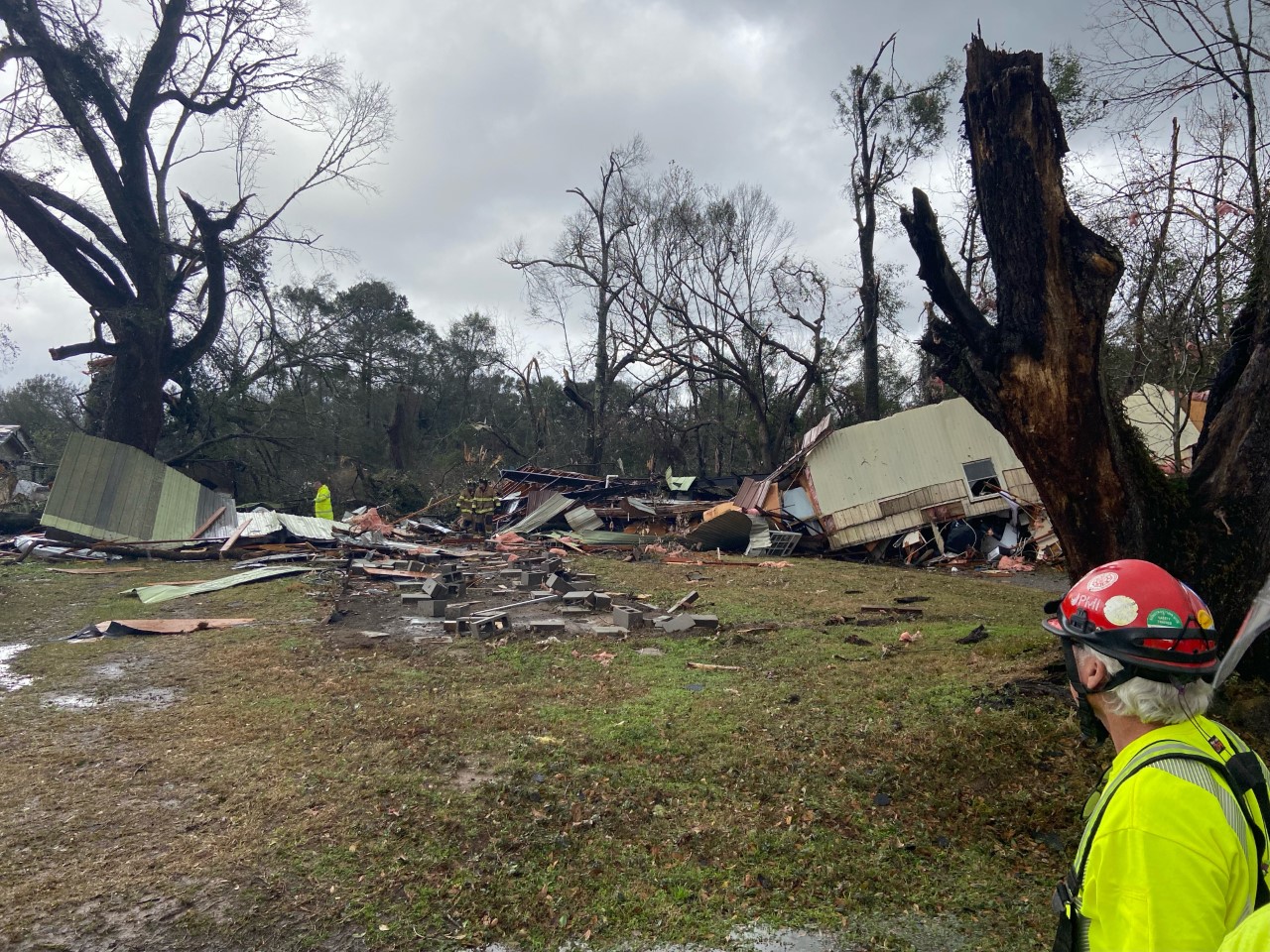
To support tornado recovery efforts, please donate to CDP’s Tornado Recovery Fund.
Contact CDP
Philanthropic contributions
If you have questions about donating to the CDP Tornado Recovery Fund, need help with your disaster-giving strategy or want to share how you’re responding to this disaster, please contact development.
(Source: Tornado damage in the Mount Vernon area in Mobile County, Alabama. Photo credit: Citronelle Mayor Jason Springer via Twitter)
Recovery updates
If you are a responding NGO, please send updates on how you are working on recovery from this disaster to Tanya Gulliver-Garcia.
We welcome the republication of our content. Please credit the Center for Disaster Philanthropy.
Philanthropic and government support
President Joe Biden approved several major disaster declarations for tornado-impacted states. Some were for Individual Assistance (IA) and some included Public Assistance (PA), Categories A and B, or A-G. All numbers are current as of July 30, 2024.
- DR-4697 for Mississippi severe storms, straight-line winds and tornadoes. IA and PA were approved for six counties and PA only for one (Categories A-G). For IA, 3,765 applications were approved for nearly $13.5 million. Additionally, $59.8 million was obligated in public assistance spending, with $47 million obligated for emergency response and $11 million for permanent work.
- DR-4698 was approved April 2, 2023 for Arkansas severe storms and tornadoes. IA and PA (A-G) were approved for three counties. For IA, 3,597 applications were approved for $9.8 million. Over $59.2 million in public assistance was obligated.
- DR-4701 was approved April 7, 2023 for Tennessee straight-line winds, tornadoes and severe storms that took place from March 31 to April 1, with a mix of Individual and Public Assistance throughout the state. For IA, 760 applications had been approved, and $3.7 million in IA was allocated. Over $47 million was obligated for PA.
- DR-4702 was approved April 10, 2023 in Kentucky for a variety of hazards, including tornadoes, that occurred March 3 and 4. Almost the entire state – 88 counties – was approved for PA, with $31.6 million obligated. Additionally, just under $600,000 was obligated in the Hazard Mitigation Grant Program.
- DR-4704 was approved April 15, 2023 for March 31 and April 1 Indiana tornadoes and storms. Eight counties were approved for IA and PA, one for PA only and four for IA only. For IA, 282 applications were approved for $2.62 million and $13.6 million obligated for PA.
- DR-4706 was approved April 24, 2023 for Oklahoma storms and tornadoes on April 19 and 20. Three counties received an IA declaration, with two of those also receiving PA approval. For IA, 455 applications have been approved for $2.99 million in assistance. Nearly $6.8 million has been obligated for PA.
- DR-4709 was approved April 27, 2023 for Florida tornadoes and storms occurring on April 12-14 was approved, with 9,642 IA applications approved for $38.8 million, and $5.2 million in PA was obligated. Broward County is the only one to be approved and it includes IA and PA.
- DR-4710 was approved May 5, 2023 for Alabama events on March 24-27. Nine counties received PA, categories A-G with almost $12 million obligated.
- DR-4712 was approved May 17, 2023 for Tennessee severe thunderstorms and possible tornadoes from March 1 to 3. About half the state – 45 counties – have received PA declarations, with $22.6 million obligated.
- DR-4721 was approved July 19, 2023 for Oklahoma severe storms, straight-line winds and tornadoes, with 19 counties approved for PA A-G with just under $15 million obligated.
- DR-4727 was approved Aug. 12, 2023 for Mississippi Severe Storms, Straight-Line Winds and Tornadoes, with 14 counties and the Mississippi Choctaw Indian Reservation receiving approval for Public Assistance A-G and two counties receiving assistance for IA and PA. In IA, 712 applications were approved for $3.26 million. Just under $9 million was obligated for PA.
- DR-4731 was approved Aug. 25, 2023 for Colorado Severe Storms, Flooding and Tornadoes, with nine counties approved for PA (Categories A-G) and $13 million obligated.
- DR-4741 was approved Sept. 21, 2023 for Missouri Severe Storms, Straight-Line Winds, Tornadoes and Flooding, with 33 counties approved for PA (Categories A-G). $6.2 million has been obligated.
- DR-4742 was approved Sept. 27, 2023 for Tennessee Severe Storms, Straight-Line Winds and Tornadoes with 10 counties designated for PA (Categories A-G)with $7.8 million obligated.
- DR-4747 was approved Oct. 26, 2023 for Kansas severe storms, straight-line winds and tornadoes for Public Assistance A-G in 20 counties. $1.3 million has been obligated.
- DR-4748 was approved Nov. 14, 2023 for Arkansas severe storms, straight-line winds and tornadoes for Public Assistance A-G in four counties. $1.68 million has been obligated.
- DR-4751 was approved Dec. 13, 2023 for Tennessee severe storms and tornadoes for IA. 2,019 applications have been approved for $4.4 million.
- DR-4753 was approved on Jan. 7, 2024 for Rhode Island severe storms, flooding and tornadoes for IA. 579 applications have been approved for a total of $3.3 million.
- DR-4757 was approved Feb. 8, 2024, for Michigan severe storms, tornadoes and flooding for IA. 116,522 applications have been approved for $421 million.
USDA is providing financial assistance to farmers, ranchers and other agricultural producers in the Mississippi Delta, a major cotton-producing area. USDA’s Disaster Supplemental Nutrition Assistance Program (D-SNAP) was activated in several states after the tornadoes this year. D-SNAP provides financial assistance to help feed families who have been affected by a disaster, including those who don’t normally receive or qualify for benefits. Families or individuals already in receipt of SNAP funds may have their amount increased to subsidize food lost in a disaster.
After the late March tornadoes across Louisiana and Missouri, CDP committed $200,000 to Emergency Legal Responders to develop various resources and guides to address legal issues which arise from tornadoes. They will do legal training, community outreach and education, and work to ensure everyone has equal access to the disaster resources needed to recover and thrive.
CDP committed $200,000 to support the United Way of Selma and Dallas County to assist community members that have not received adequate funding from private insurance, FEMA, SBA and the USDA to repair their homes. Funding will be used to restore and repair homes.
After the late March tornadoes across Mississippi, Tennessee, Alabama and Georgia, Housing and Urban Development committed $200,000 to support its partners, including the American Red Cross, Convoy of Hope, Operation Blessing, Team Rubicon, Inspiritus and ToolBank Disaster Services and World Central Kitchen.
Walmart and the Walmart Foundation announced $400,000 in cash and in-kind support for the Mississippi tornadoes. They used three store parking lots to provide meals and distribute water, and in Amory to provide showers. Two locations used food from Operation BBQ, while one is utilized a Walmart cook trailer. They said, “Our philanthropy aims to improve entire systems, not just respond in the moment. These investments also support efforts to help communities build resiliency and respond more quickly and effectively when disaster strikes.” Read more here.
Resources
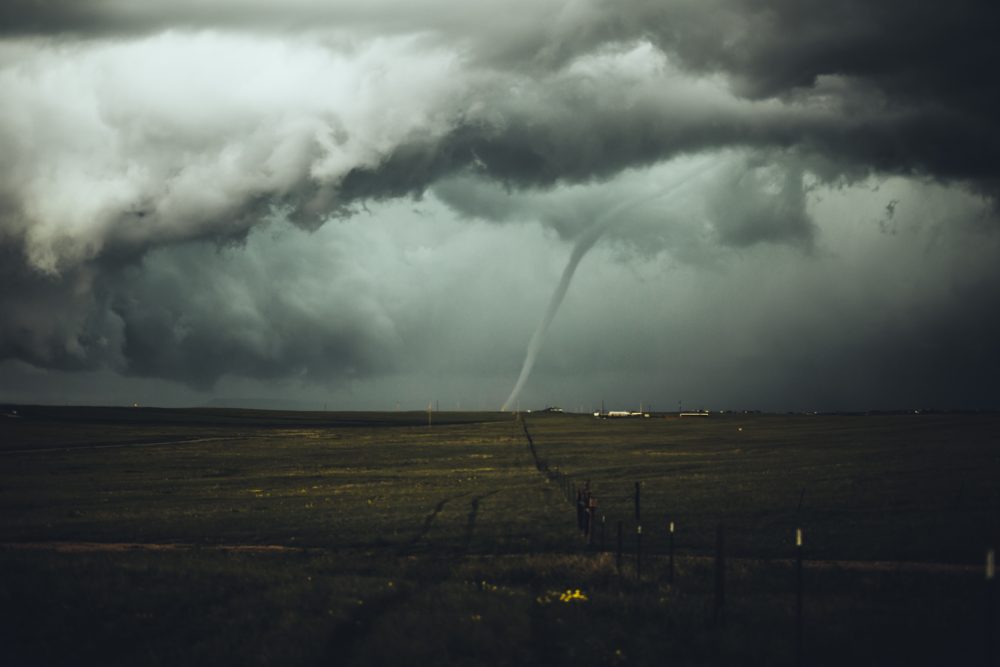
Tornadoes
The National Weather Service defines tornadoes as “a violently rotating column of air touching the ground, usually attached to the base of a thunderstorm.” The U.S. is home to more tornadoes than any other country in the world, with approximately 900 to 1,700 tornadoes occurring a year throughout the country.
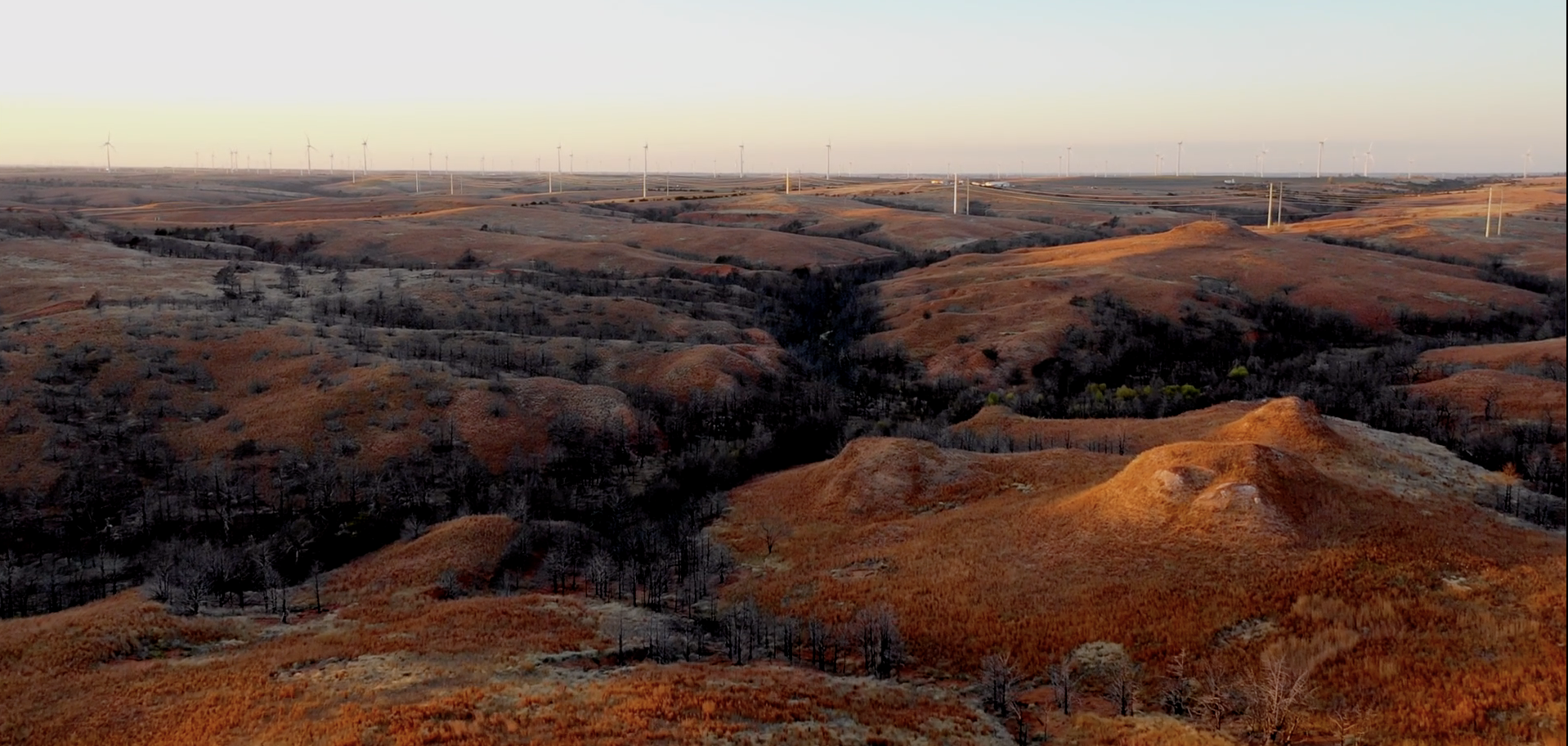
Rural Populations
Rural populations often struggle with disaster response and recovery. Explore why.

Long-Term Recovery Groups
A long-term recovery group is a cooperative body that is made up of representatives from faith-based, nonprofit, government, business and other organizations working within a community to assist individuals and families as they recover from disaster.